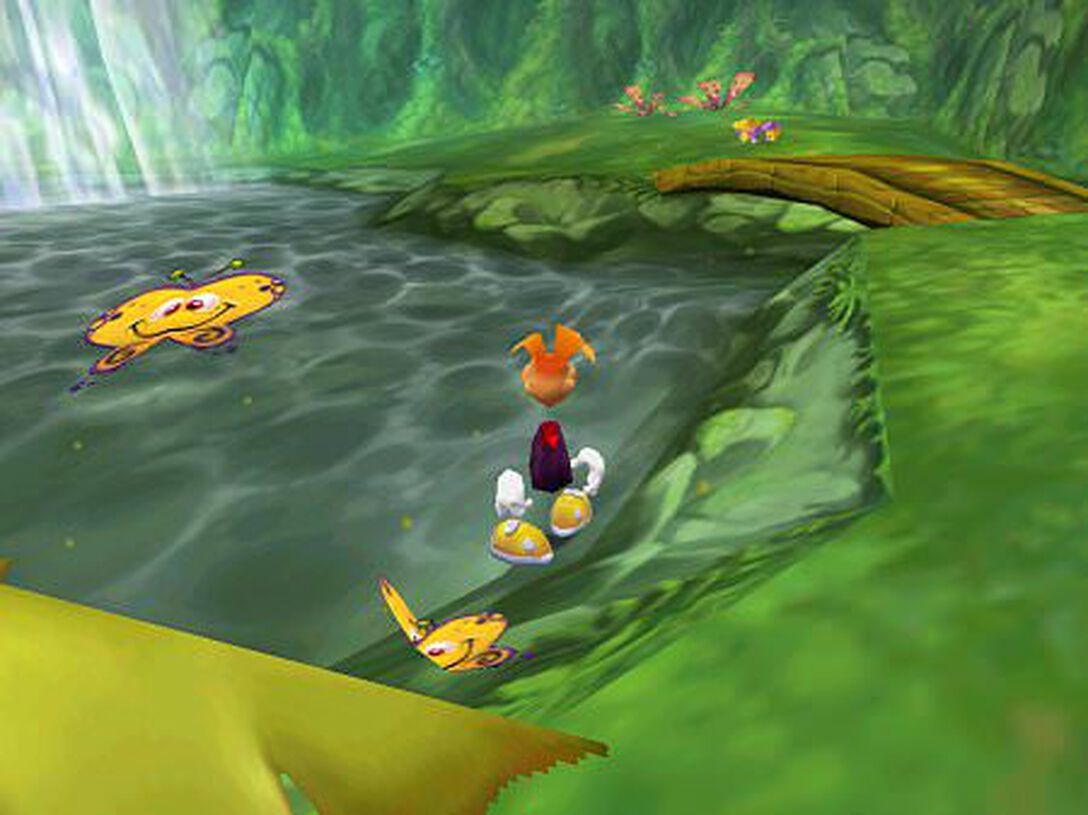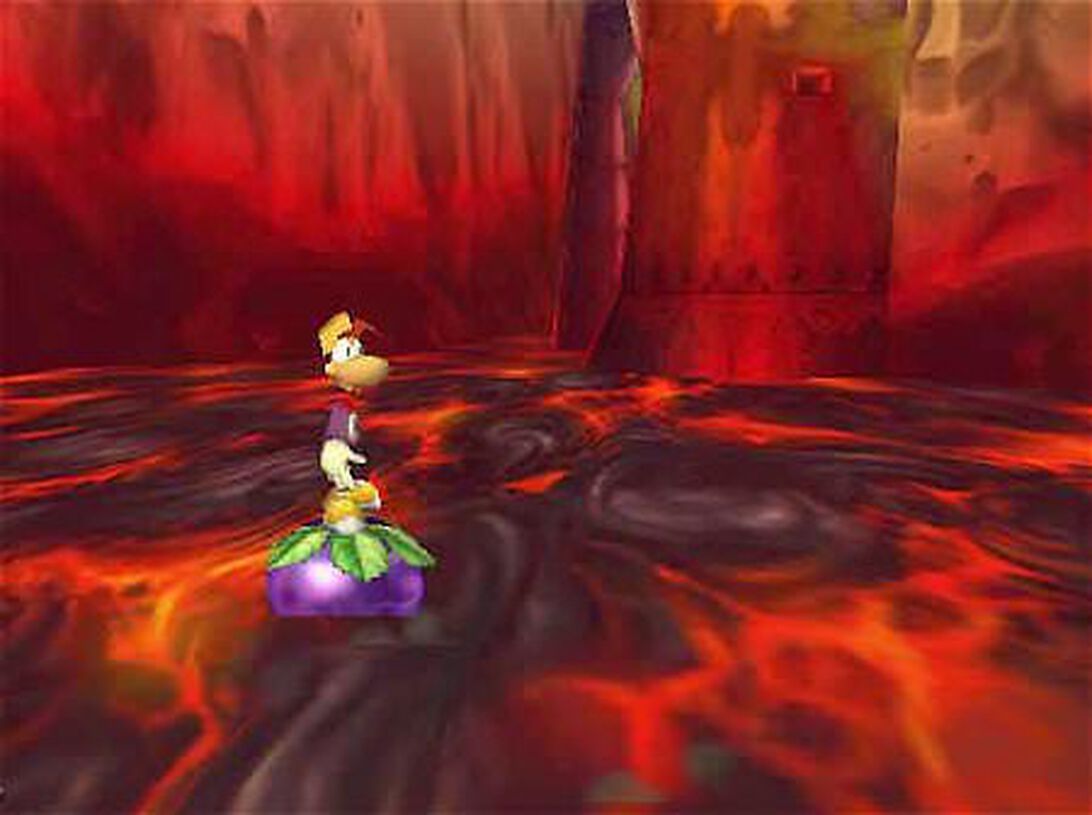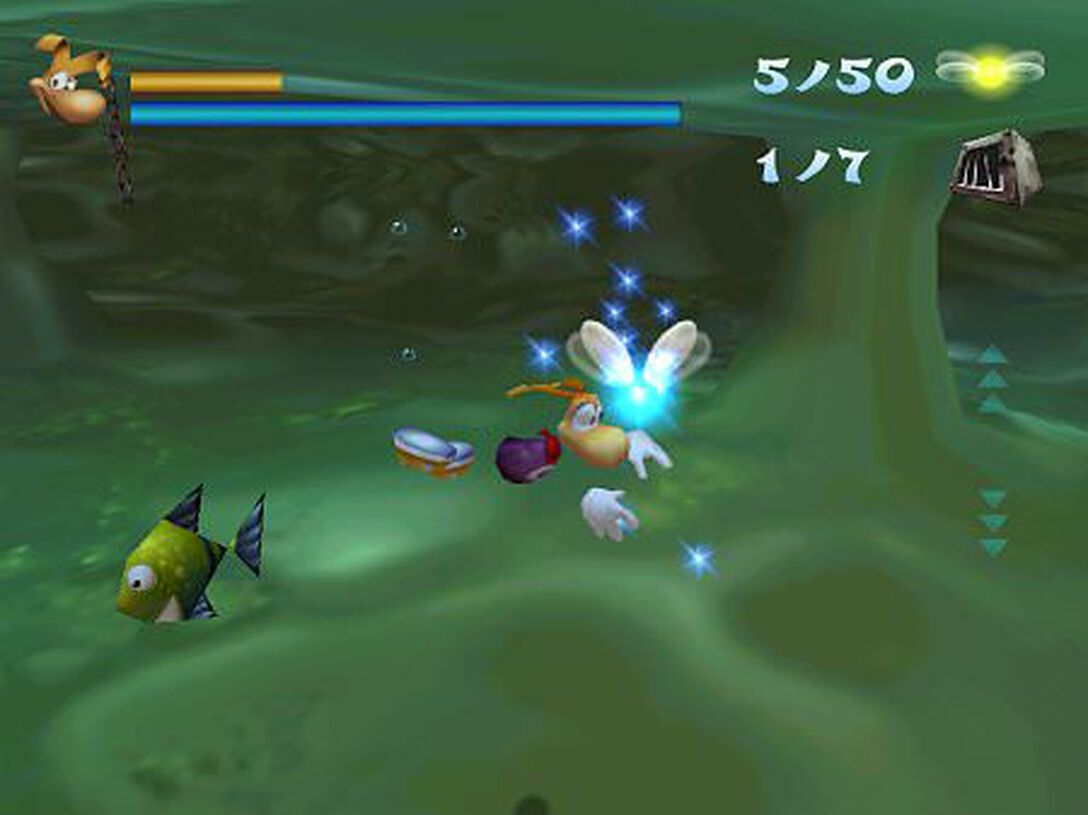Michel Ancel: A Fallen Legend, Part 1
Reflecting on Michel Ancel's legacy: the good, the bad, and the ugly.

The video game industry may be vast and more renowned in present-day culture, but there are no big-name celebrities involved in it like most other entertainment media. There are big names like Warren Spector, Yu Suzuki, Hideo Kojima, and of course Shigeru Miyamoto — just to name a few. Even indie developers Scott Cawthon and Toby Fox (creators of Five Nights at Freddy’s and Undertale, respectively) have become well-known names in the industry. The sad truth, however, is that video game developers have never really reached celebrity status like book authors, movie directors, or movie stars.
The video game industry is home to many big names, responsible for multiple games, both infamously flawed and popularly acclaimed. One name which I feel is well known, but also lost in the sea of names compiling this industry, is Michel Ancel.
Ancel went from a simple artist on a team to creating a video game icon. His passion project went unnoticed by the public but got the attention of one of the biggest film directors of all time. Most, if not all, games under his direction were well regarded and highly talked about… only for him to quietly step away from the spotlight and retire.
Ancel has been accused of being a toxic boss, and yet he was also one of my childhood heroes before I even knew his name. Ancel seems to have been through it all, holding one of the most unique careers within the video game industry. He may have been out of it for quite a while now, but I still believe he’s worth talking about and exploring. Not to mention that it’s thanks to this man I have become the gamer that I am today, his career influential in my personal gaming journey.

Ancel was born in Monaco in 1972. At 17, he became one of the first recruits for Ubisoft after impressing company CEOs, the Guillemot Brothers, with his animation skills. His first projects included Natalie Bookchin’s The Intruder, Brain Blasters, and Pick N’ Pile, for which he served as a graphic artist, programmer, and even a sound designer. It was Ancel’s involvement with those titles that garnered interest from the Guillemot Brothers when Ancel pitched his own game ideas.
While I played none of the above-mentioned games, learning how Ancel was only a small part of their development and not the project lead right away gave me insight into how we all start small and then move up in our chosen fields. It was a lesson I’ve since applied to progressing through many jobs and aspirations.
Rayman - Creativity Without Limits
Fast forward to September 1st, 1995, with the debut of Ancel’s first game as lead designer and director: Rayman. A 2D side-scroller featuring the titular Rayman as he sets out on a quest to save his world from the evil Mr. Dark. The game went through many concepts and revisions, with the original design as a 2D co-op game for the SNES and initially having Rayman be the alter ego of a boy named ‘Jimmy’. The final result launched on the SEGA Saturn, Atari Jaguar, PCs, and Sony’s PlayStation, wowing critics and gamers alike with its colorful worlds, creative bosses, tight gameplay, and memorable soundtrack. It would even earn notoriety for its difficulty.
On a personal level, Rayman is a game that means a lot to me, as it was the first video game I’ve ever played that wasn’t based on a pre-existing franchise. Six year old Harel had seen nothing like Rayman, as I didn’t know video games could feature original content not based on anything.

In what other games could you fight a living saxophone? Fly with your helicopter hair? Have a villain hide in a land of candies? Why aren’t Rayman’s limbs connected? Any answer to these questions is attributed to Ancel’s mind and creativity.
Michel Ancel’s mentality when designing a game is to be creative and free of limitations. Often he spoke against games holding the player’s hand and guiding gamers without letting them problem solve on their own. This mentality also caters to his artistic vision. While the works of animators Hayao Miyazaki and Tex Avery highly inspired Rayman, you can’t confuse Rayman with anything else. It stands as its own unique creation. The answers to those questions I asked? While there is a development reasoning for Rayman not having his limbs attached, everything else falls under “why not?”
These and more demonstrate one of Ancel’s trademark features and his out-of-the-box thinking. You’re playing a cartoonish game. Who cares if it makes sense? I grew a lot from realizing that. Why follow a norm when you can create new things and grow from them? As an outsider growing up, I was always told that being different was my weakness. Young boys were thin and into soccer while I was chubby and enjoyed drawing and writing. I was ‘weird’ when I grew up and it’s thanks to Rayman and Ancel’s views that I found a safe corner for myself. Seeing the creativity and positive message embedded in Ancel’s creation helped me grow as a creator myself.
You never forget your inspiration, and Rayman was mine.



Rayman 2: The Great Escape. Source: Ubisoft.
With the success of Rayman, they tasked Ancel with creating a sequel. The original concept for a sequel started with another 2D platformer, but as the industry was making a push to 3D, Ancel had to follow suit and turn Rayman 2 into a 3D adventure.
This was an interesting time for Ancel as it showed not only his ambition but his grit. A simple task was ahead of him to create a sequel to a game which was already loved, meaning most of the hard work was already done and you can just build around it. A demo of the original Rayman 2, which can be played as a bonus on the PlayStation version of the finished game, even showed that this is what the original plan was. Ancel, however, wanted to break out and go in the direction no one would expect.
How would you make a 3D sequel to a 2D game? The answer apparently is you don’t.
Before Rayman 2, Ancel worked on Tonic Trouble for the Nintendo 64 and PC. The game was a 3D platformer focusing on another limbless hero named ‘Ed’ who had to collect a bunch of tonics he accidentally spread around the world. While not directed by Ancel himself, he was a key figure in the game’s creation as it served as an engine test for the sequel people were looking forward to. I remember writing Tonic Trouble off when I first saw it, as it looked like a cheap Rayman 2 rip-off. Turns out I was wrong.
I’ve never played Tonic Trouble personally and yet I’m grateful for it as it shaped up one of my favorite games of all time: Rayman 2: The Great Escape. Having mastered the 3D engine with Tonic Trouble, Ancel revamped Rayman 2 to be a bigger game with higher stakes and a darker tone while still keeping the loveable characters and beautiful fantasy worlds. What’s interesting to note about Rayman 2’s development — aside from the many ports which followed — was the time in which Ancel outright stood up to Ubisoft regarding a crucial element.
When 3D was in its early days, platformers and action games such as Tomb Raider or Croc: Legend of the Gobbos featured a control scheme known as ‘Tank Controls’. To keep it simple, players control the character with a D-Pad/Arrow keys and, if the character turns, the camera turns as well to stay behind the character. Ubisoft wanted Rayman 2 to use that control scheme, but Ancel wanted to use the new analog control presented in Super Mario 64. Ubisoft heads were sure he was crazy and objected, yet Ancel stuck to his guns. This decision made for a better controlling game and a smoother experience.
Source: YouTube.
At this point in Ancel’s career, he proved his capabilities and expertise. He created a bestselling side-scroller, completed a whole new game simply to test an engine, went against Ubisoft’s wishes (which earned him a good deal of raised eyebrows), and delivered a sequel worthy of the original game. His and the game’s success blew people’s minds and influenced 3D platformers that followed for years.
This man seemed to be unstoppable to a young teenager, learning all about this for the first time. The games I loved and grew up with are not only industry-beloved but also defied expectations. How could I not be impressed?
Ancel’s next big idea came to be when testing for bugs in Rayman 2. He discovered a glitch that involved Rayman being able to clip through the walls of the level and ending up stuck in a massive void outside the bounds of the game. While most developers would just fix the bug, Ancel figured this ‘endless open area’ was a fascinating concept. Going anywhere you wanted, any time you wanted, with complete freedom granted to you. The idea would serve Ancel as the basis for his next game.
Beyond Good and Evil – Career Highs and Lows
Ancel’s next game was NOT a sequel to Rayman 2. When Rayman 3: Hoodlum Havoc hit stores in 2003, it was initially seen as somewhat of a disappointment because of Ancel’s notable absence. Regardless, Ancel still gave the final product his blessing and expressed his pride in the development team.
Personally, I never felt Rayman 3 was ‘unrecognizable’. Everything I loved about the franchise was still there. The creative worlds, fun characters, you name it. Even knowing the truth now, I still feel like the game fits in the series, with only minor deviations from what came before.
So if Ancel wasn’t a big part of Rayman 3’s development… then what was he working on?

Viewed by many and himself as his magnum opus, Beyond Good and Evil, released in 2003. This game is without a doubt Ancel’s biggest project throughout his career.
The game takes place in the fictional world of Hillys, focusing on Jade, a photographer and caretaker, as well as her adoptive pig uncle Pey’j. They join a resistance to uncover their protective guard’s corruption. The game received critical acclaim during its release and many gaming outlets highlighted it as one of the best releases of the year, but it came at a cost for Ancel.
In reviewing the game’s development, it’s revealed that they scrapped many elements. The game ended up being smaller in scale than originally intended. Some changes came from upper management, aiming to make the game more marketable to audiences, while some came from Ancel himself as he came to realize some of his initial ideas for the game weren’t as effective in practice.
While critics warmly received the final product, the people behind the game — except for Ancel himself — do not look back at the game’s development fondly. Unfortunately, the problems do not end there.
Sales for Beyond Good and Evil were stagnant, as the loving, critical reception didn’t translate to sales numbers. I played the game years on from its release after discovering Ancel directed it and the high praise it received from reviewers.
While I think the game has some issues, I found that many will skip and overlook those issues, glorifying the game. I can’t deny its quality or the concepts I absolutely love about it.
While not having as much sentimental value for me as Rayman, Beyond Good and Evil still provided me with unforgettable experiences. I will never forget my jaw dropping once my hovercraft turned into a spaceship, allowing me to explore the stars. How many games allow you to do that with a quick transition?

A lot of love and effort went into this game. Ancel proved he wasn't just a “one franchise wonder”. The most painful lesson I learned from this creative mastermind came through this game’s inception and release: Love and effort don’t always lead to immediate success.
When you look at it in terms of sales, Beyond Good and Evil was a failure, selling less than a million copies. This failure still lingers in the Ubisoft offices, as higher-ups still refer to it as a mistake, allegedly brought up as their excuse to not green-light any game which carries risk. Ubisoft has been accused of even sabotaging Beyond Good and Evil, releasing it against highly competitive titles including their own Prince of Persia reboot. It’s here where one of Michel Ancel’s high points is also his lowest. When I think of tragedies relating to video game development, this is my go-to example.
Things were definitely in limbo after Beyond Good and Evil’s release. The game may have ended with a vague promise of a sequel, but that seemed impossible due to the low sales of the original.
Ancel initially returned to lead the development of Rayman’s 4th adventure, promising a grand and hilarious adventure in which our favorite limbless hero takes on an army of killer rabbits. As many fans know, however, this game was never the one that made it to store shelves, which confused me completely. I still remember my bewilderment upon booting up the game and finding myself doing a bunch of weird things which just didn’t feel like Rayman. He was there, sure, but where was everything else I loved about him?

Rayman Raving Rabbids was released on multiple consoles, but they designed the game for the Wii and its then-revolutionary controller. The trailer for the original vision for the game showed some features involving the remote, but the final product was nothing more than a mini-game collection that fell short of its promises.
I came in expecting Rayman to be fighting killer rabbits, riding wild creatures, saving a supposed girlfriend, doing what I always associated Rayman with doing… only to get a mini-game collection with none of the above. The reason for it was that supposedly, Ancel let his team take over again, and they turned the game into a party game rather than Rayman’s next platforming adventure.
This baffling decision resulted in the Rabbids taking over the Rayman franchise, eventually branching over to their own entity with Rayman himself forgotten. I may have some personal spite for the Rabbids and how the final version of Rayman Raving Rabbids turned out. Here laid Ancel’s darkest point in his creative career. His pride and joy was being shoved to the side by a bunch of Rabbids who I can best describe as precursors to the Minions in terms of annoyance. Though this was his big masterpiece that was unnoticed by nearly everyone, it didn’t escape a certain master in the film industry.
